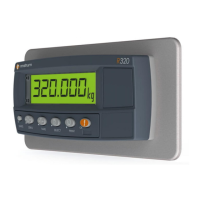6.3. Filtering Techniques
There is a trade-off between noise filtering and the step-response time of the system. The step-
response is defined as the time between placing a weight on the scale and the correct stable weight
reading being displayed. This does not affect the number of readings per second that are taken. It
simply defines the amount of time that is required to determine a final weight reading.
The FILTER setting in the instrument setup shows the amount of time over which the averaging is
taken. Increasing the averaging time will result in a more stable reading but will extend the time it
takes the instrument to settle to a final reading. Refer to FILTER (Reading Average) page 34.
6.4. Industrial vs OIML and NTEP Modes
Instruments may be operated in Industrial, OIML, or NTEP modes depending on the application
firmware. The OIML, and NTEP modes restrict certain aspects of the operation of the instrument to
ensure compliance with the respective trade certified standards. For more information refer to the
Calibration Counter section below and also to the USE (Scale Use) section page 34 for setup
information. The following table lists the operation differences for each of these modes.
Table 1: Industrial vs OIML and NTEP Modes
6.5. Calibration Counter
Within the setup there are several critical steps that can affect the calibration and/or legal for trade
performance of the instrument. If any of these steps are altered, the trade certification of the scale
could be voided.
The instrument provides built-in calibration counter(s) to monitor the number of times the critical
steps are altered. The value of the counter(s) is stored within the instrument and can only be reset at

